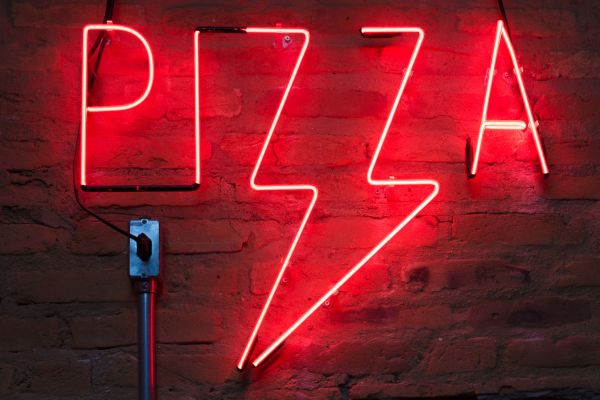
Restaurant Lighting Ideas by Design and Space: A Complete Guide
Share
Restaurant lighting ideas are crucial as they shape the atmosphere, carve décor, and dictate the dining experience. Whether your restaurant is a cosy café or a luxury fine-dining setup, lighting will be needed to ensure function, beauty, and customer satisfaction. This guide will walk you through some lighting solutions according to design and space, helping take your restaurant ambience into higher octaves.
Why is lighting important in Restaurants?
Probably the most powerful tool any restaurant has for setting interior design is its lighting. It affects a guest's mood, any food placed on his plate, and the preparation of his servers. The lighting should, therefore, reflect the brand; warm dim lighting will be associated with intimacy, whereas bright and stark will speak for energy and modernity.
Effective lighting is layered: ambient lighting creates an atmosphere, task lighting ensures that guests and staff willingly engage in the act of eating, and accent lighting draws attention to some spectacular design elements. Section by section from the foyer to the kitchen, the space requires different lighting solutions. In conclusion, well-thought-out lighting schemes result in good customer satisfaction, brand perception, and smooth operation.
10 Excellent Restaurant Lighting Ideas
1. Natural Daylight
Natural daylight is the cheapest source of light, and if employed effectively, it adds vibrancy to the ambiance while saving the restaurant a hefty amount on utility bills. Restaurants with big windows, skylights, or open facades enjoy better ambience during the day. However, glare should be minimised with sheer blinds or UV filters to protect both customers' comfort and interior furnishings.
2. LED
LEDs have become prime lighting options in modern restaurant design. These light sources consume minimal electricity and come in different colours and intensities. Place LED strip lighting inside shelving, along coving, or inside booths for a clean look. Make sure to get LEDs with high colour rendering ability (CRI >90) so that food sells itself in the right colour.

3. Neon Lights
Neon lighting points to a bold character and an amusing personality for the brand. Adding personalized neon signs creates visual interest and sets the tone for branding when used for signage or a feature wall. A few neon signs can be placed in the lounge or social corner, combined with soft ambient lighting to balance the brightness and avoid visual fatigue.

4. Smart Lights
Smart lighting systems give restaurateurs the ability to automate lighting scenes based on the time of the day or theme. Settings such as brightness, colours, and light patterns may be changed through the app or wall panel controls. This can be useful to quickly shift the ambience of a restaurant from lunchtime to dinnertime, for example, so the change in mood does not have to be created and set up manually.
5. Table Lamps
Table lamps can create an intimate warm ambience in dining in Texas. Rechargeable or mains-powered providing a soft glow, table lamps enhance privacy and add aesthetic value to the table. Make sure the base is stable and the bulb is covered with a diffuser to prevent glare in guests' eyes.
6. Chandeliers
A chandelier means glamor for any dining area. Be it rustic, vintage, or contemporary, such fixtures create dramatic focal features. Ideal above the centre seating or grand communal tables, hence basking in elegance and class. The chandeliers must be hung at a comfortable height - roughly 700 mm above the tables.
7. Pendants
Pendant lights have a good deal of flexibility. They work well in all dining and bar areas and even counters. Suspend them over unofficial tables or walkways for direct light that is not too much for the space. Choose shades made from metal, glass, or natural fibres to reflect the design theme. Warm white bulbs should be used (about 2700K).
8. Track Lighting
Track lights ensure a great deal of flexibility and control. The adjustable heads allow light to be directed at artwork, textured walls, or product displays, and they are great for restaurants featuring rotating décor or seasonal layouts. Choose slim-line tracks in colours that blend with the ceiling for a minimalist clean look.
9. Wall Sconces
Warm and horizontal light discharge from wall lights. On corridors, booth seating, or side walls, wall sconces are symmetrically used to create rhythm, while asymmetry allows for some artistic flair. Frosted or fabric shades give the light a nice diffusion and add to the layered lighting effect.

10. Recessed Lighting
These are silently working in the background to provide downlights for ambient coverage without any unwanted distractions from the décor. An ideal position would be the suspended ceiling so they can provide linear cleanliness in vision. Adjustable versions could be used to add extra shine to selected areas that require it. Make sure you don't position them directly above diners' heads. It is better to offset so that shadows and glare are avoided.
Layering Your Lighting
Any great restaurant lighting must be the harmonious synthesis of:
- Ambient lighting: The general washing of overhead light, typically warm, and even.
- Task lighting: Directed beams in cooking, reading menus, or at the bar.
- Accent lighting: Highlights décor or focal points like artwork or signage.
- Decorative lighting: Fixtures that are visual statements in themselves.
The best restaurant lighting ideas always involve a considered blending of these layers throughout the venue.
Restaurant Lighting Ideas by Space
Dining-Area-In-Direct-Light
Consider the heart of your restaurant as a mixture of pendant lights and table lamps. Aim for soft warmth that would flatter skin tones as well as food colours. Harsh lighting of inconsistent colour temperature would prevent a good dining experience.
Bar and Lounge Lighting
Give it a combination of bar lighting settings like ambience light, LED accents, and a big neon sign. It would do well if your choice of lighting involved pendant lights over the bar focused on the area whilst you could play with the mood lighting through smart systems. Various coloured lights could be used to get different social zones put together.
Kitchen and Prep Area
Above all else, functionality must be ensured. A bright white task light has to allow visibility for everything: from food prep to cooking and cleaning. Use LED panels or strip lights underneath counters and below the cabinets. Lights have to be easy to clean and be resistant to heat and moisture.
Entryway and Waiting Area
What they say: the first impression lasts. Select decorative lights like chandeliers or wall-mounted scones and provide soft ambient light. The sign must be nicely lit too, let the feeling be warm and inviting. This lighting directs the viewer to where the intriguing stuff starts—or rather, sets the tone of your brand.
Outdoor Seating and Patio Lighting
String lights, lanterns, bollard lights, or otherwise solar-powered fixtures are great! Use waterproof and weather-resistant ones, please. Warm, low-level light creates a nice, relaxing, romantic ambience, suitable for dinner in the evening.
Tips on Selecting the Right Lighting in Restaurant
Have your Concept Well-Defined: Depending on a casual, industrial, vintage, or fine-dining concept, lighting would be provided accordingly.
Work in layers: Use ambient, task, and accent lighting to provide interest and function.
Choose the proper colour temperature: Warm can be used in dining areas and cool lighting for kitchens.
Focus on Energy-Efficiency: LEDs and smart systems work for the reduction of costs over time and fulfil the sustainably minded view.
Consider Maintenance: Can they be cleaned and changed without too much trouble? No lights out of reach, usually get neglected. Those are tricks for maintenance.
Prioritize CRI: A high Colour Rendering Index is best for making food look attractive and colours appear true.
Provide A Dimming Option: Dimmers allow for fine-tuning the ambience due to mood shifts from time of day to particular events.
Consider Fitting Styles: Make sure the style, size, and finish of fixtures complement the overall design scheme.
Plan to Minimize Glare: Use diffusers and shades to can the glare directly into guests' eyes.
Be Smart with Technology: Smart systems can activate ambience and even self-adjust depending on natural light throughout the day.
Common Lighting Mistakes to Avoid
Many of these are mistakes restaurant owners fall into—identify them early and avoid them:
Too Bright: Obnoxious brightness flattens the atmosphere and discourages comfort. Let there be no excessive overhead lighting.
Too Dim: Dimmed is disturbing to customers and does not help visibility for staff.
Mixed Temperatures: Never mix cool with warm bulbs. Decide on your temperature palette according to your concept.
Ignoring CRI Ratings: Low CRI bulbs change colour and make food look unappetizing.
Bad Placement: Lights placed just above the customer's head or inclined at bad angles create glare and shadows.
One Light Source Only : Avoid relying on one light source or fixture only. You need to experiment with multiple light sources.
Cheap Fixtures: Low quality might not meet safety standards and could be quick to fail.
Overuse of Neon or Colour Lighting: Such accents work well, but not everywhere. They should support rather than dominate the scheme.
Not Planning for Maintenance: Fixtures that are hard to reach or clean will soon look tired.
Poor Control System: There's no excitement in poor dimmer or control system.
Avoiding Common Lighting Mistakes should be addressed during the design phase, saving on cost and stress later.
Conclusion
In summary, restaurant lighting ideas are at the core of making a warm, chic, and functional space. From layering ambient and task light to expressing themselves through decorative lighting, the way lighting is introduced within the interior can completely turn around guest perception and interaction with the space. Get it right, and your restaurant is going to shine—literally and figuratively.

